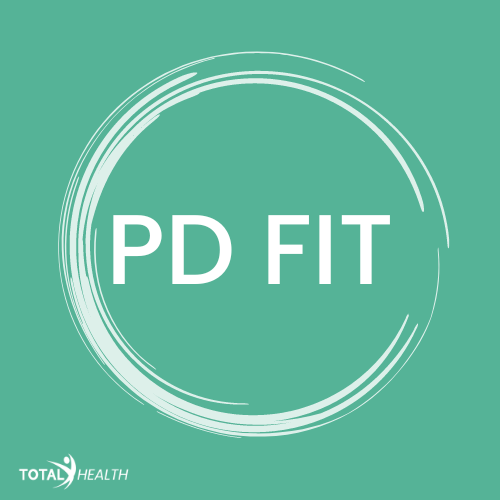Check out my latest article for Parkinson’s New Zealand, I was recently featured in both their digital and printed newsletters. Here is the full article –
Making Movement a Daily Habit: Staying Motivated with Parkinson’s
Living with Parkinson’s presents challenges, but regular exercise is a powerful tool for managing symptoms and enhancing well-being. Evidence suggests that consistent exercise may help slow Parkinson’s progression.
However, staying motivated isn’t always easy, especially when dealing with fatigue, pain, stiffness, balance issues, or apathy—common symptoms that can make even the simplest tasks feel overwhelming. Acknowledging these barriers and working within your capabilities is the first step toward establishing a sustainable and empowering exercise routine.
The Power of Consistency
Exercise is as vital to daily life as eating well or getting enough sleep. The key isn’t perfection—it’s consistency. Even on low-energy days, small movements count. What matters most is the habit of starting. The duration or intensity can be adapted to how you’re feeling, but committing to some form of movement each day helps maintain momentum.
Exercise strengthens both body and mind. It’s not about being perfect; it’s about showing up for yourself every day, no matter how small the effort might seem.
Overcoming Common Obstacles to Keep You Moving
Living with Parkinson’s presents challenges, but staying active is possible with the right strategies. Rather than aiming for a perfect routine, focus on finding ways to move that work for you.
Fatigue: Energy levels can fluctuate, making it tough to stay consistent. Break movement into small, manageable chunks throughout the day. A brief stretch or short walk can be just as beneficial as a longer session when done regularly. Think little and often.
Stiffness: When movement feels difficult, begin with gentle stretches or range-of-motion exercises to ease into activity. Starting slow helps loosen tight muscles and prepares your body for more movement. Less movement leads to more stiffness, making it harder to get going again.
Balance Issues: Feeling unsteady can make exercise daunting. Incorporate movements while seated or use supportive surfaces, such as holding onto a countertop for stability. You can exercise from a seated position effectively if you are having a weaker lower body day or feeling unbalanced.
Apathy and Motivation: On low-energy days, simplify your approach by setting small, achievable goals, such as standing up every hour or stretching for five minutes. Celebrating these small wins can build momentum over time. If apathy is a challenge, creating a reminder list of daily tasks can help prompt action, even when motivation is low, encouraging movement and a sense of accomplishment.
Pain: Chronic pain can be a significant barrier to movement, but gentle, regular exercise can help ease discomfort over time. It’s important to focus on movements that feel manageable and supportive. Start by engaging in activities that encourage relaxation and mobility without increasing pain, such as slow stretching, mindful breathing exercises, or light walking. Incorporate pacing strategies—short sessions followed by rest—to help prevent overexertion. The goal is to keep moving within your personal limits, helping to build resilience and gradually reduce pain flare-ups.
Recognising these challenges and adapting your routine to fit your needs can make movement a positive and manageable part of daily life.
Building Motivation and Discipline
Motivation can be fleeting, but discipline will keep you moving forward. Establishing a routine is essential for making exercise a consistent part of your life. Here are some strategies to help stay on track:
- Choose What You Enjoy: Enjoyment makes it easier to stick with your routine. Explore different activities until you find something you enjoy and engage in.
- Make It Social: Join a class, exercise with a friend, or involve family members to make your sessions more enjoyable and engaging.
- Set Realistic Goals: Start small and build gradually. Celebrate small wins to stay motivated.
- Create a Routine: Set regular exercise times that fit into your schedule—just like brushing your teeth, it becomes second nature with time.
The Power of Exercise Snacks
Short bursts of movement, or “Exercise Snacks,” can be effective, providing boosts of energy and focus without overwhelming fatigue.
Incorporating visual reminders—such as sticky notes or setting alarms—can help keep movement at the forefront of your day. Plan your exercise sessions around your medication “on times” to ensure you’re moving when your body feels its best.
Embracing Empowerment Through Movement
Regular movement supports symptom management, improves balance, and enhances mood.
It’s important to listen to your body and be kind to yourself. There will be good days and challenging days—what matters is continuing to show up, no matter how small the effort.
Closing Thoughts: Movement with a Smile
I know it’s easy for me to say, and much harder for you to do—I see it firsthand working with the Parkinson’s community. Many people push themselves to do everything perfectly during classes, feeling anxious if they can’t. But here’s the thing: exercise isn’t about perfection. It’s about showing up, trying your best, and allowing yourself room for a little lightness.
The best approach? Embrace exercise with a bit of brevity—give yourself permission to be playful, have a laugh, and even be a little silly. Try not to judge what you can or can’t do—see each class as an opportunity to move in a way that works for you, meet some lovely people, and enjoy the experience. Movement doesn’t have to be serious to be effective. It’s about finding joy in the process and celebrating the effort, no matter how small.
Movement is a key part of living well with Parkinson’s, supporting physical function, mental clarity, and emotional resilience. Making movement a daily habit builds a foundation of strength, confidence, and determination to face each day.
Start where you are. Take one step at a time. Each movement counts, and every effort helps you feel stronger and more in control of your well-being.
If you need support or guidance in developing your exercise routine, feel free to reach out—I’m here to help you every step of the way.


0 Comments